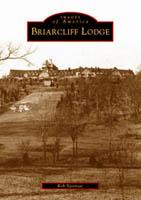(As written ca. 2000)
Surrounding Briarcliff
Lodge are several other buildings once used by The King’s College. Just
off the northwest corner of the Lodge is the Old Science Building, aka
Student Life Center , which contains an indoor swimming pool. This building
is in the Shingle style and dates to 1902. During the hotel era, this building
contained a bowling alley, squash court, shuffleboard, darkroom, and a
large billiard room. Then it was known as the Casino, or Health Annex.
It has been partially renovated inside, My only expedition was on the very
top floor at the south end which revealed drop ceilings and cheap paneling.
A stairway leads down the hill, and these steps were known in the TKC era as the Chapel Steps. At the bottom of the hill is Squire Hall (c. 1955-1959), the gymnasium, which doubled as a place for chapel services. A low white building with a curved roof in the style of an ice hockey arena, Squire Hall bears testimonials from students decrying the fate of their beloved school. “R.I.P. 9D4” in red spray paint marks the south wall, with a sad face :-( painted inside the loop of the “P,” along with three more sad faces above the circulation. Outside the gym is an LP of gymnasts music. More religious literature lays nearby.
Think of all the basketball games played here, all the gym classes, and perhaps graduation ceremonies. Now it is forlorn, and the great Purple Knight painted on the south wall watches over only the occasional explorer. The gym floor is extremely warped along the east and west sides, and a busted pay phone lies inside the paint. Even the foam padding still hangs from the gym walls. In a dark corner office, flashlight revealed toppled filing cabinets, and athletic records of TKC student athletes. If you played basketball or busted an ankle in gym class in the early 1990s, chances are that your record is in there. The entrance door windows at the southeast corner of the building are still covered with purple velvet shades, but are hidden from the outside by wooden boards. Before the hoops in the gym were taken down, people would still go in and shoot baskets.
Near the gym is the pond, once used by U.S. Olympic swimming teams for tryouts. The famous tiled pool is no doubt covered with sludge now, it would make an interesting archaeological excavation in the future. The track is still used by neighborhood residents, who love the solitude of the place, and the amenities offered by the defunct college. Perhaps it is a feeling some people have become used to, and why they oppose any large project proposed for the site.
Moving further south, the Power House, or Steam Plant, lies directly below the Lodge, Huge boilers and other machinery look like they could be fired up and still work perfectly. There are tunnels that lead from here to the Lodge. This building also dates to the 1902. South of the Power House is the Robert A. Cook Academic / Science Building. (c. 1979) Before this was constructed, a building known as Harmony Hall was on this site that was said to have swayed with the wind. Constructed in that modern-brick look, The Cook Building is four floors at its tallest, and has a greenhouse on the third floor above the main entrance. This is just as eerie as the men’s dorms, it is kind of revolting to see something so new abandoned too soon. Once a proud part of The King’s College efforts to expand and attract new students, the Cook Building is now a monument of waste. My friend Andrew remarked that there are places where people don’t have enough schools, and we can afford to throw schools away, even ones with brand new, two million dollar science buildings. They didn’t even take all of the science equipment with them when they left.
Just across the
road is the Music Building (c. 1902). Mary Cheever's book The
Changing Landscape notes that Harmony Hall was staff dorms, and this
building likely served that function as well during the hotel era. South
of the Music Building is the Miller Circle dormitory (c.1970), with room
for 200 students. It is crescent-shaped, and said to resemble a series
of rowhouses, with a “sham mansard roof.” Further east, behind the baseball
field, is the stone residence of Walter Law, which served as men’s dorms
from 1970 until shortly before the school closed, when it was sold off.
It is a private residence again, restored to all its original glory. Heading
back out the property, before the guardhouse, is a small shed and a red
Tokheim gas pump, a pretty neat relic itself. The Briarcliff Garage stood
near here, until the winter of 1999 / 2000. It too was in the half-timber
style, and was originally a stable with a blacksmith and later a garage
for guests of the Lodge. It was said to be falling in on itself shortly
before demolition.
All photographs taken February 9, 2000.
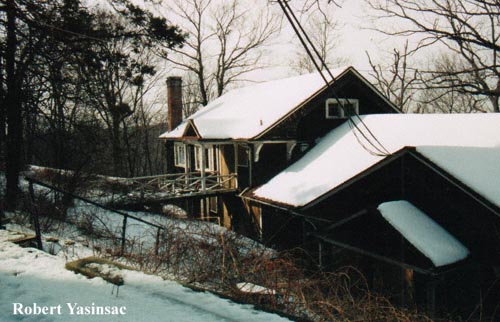
The shingle-style building, from the northeast.
This contains a swimming pool among other recreational facilities.
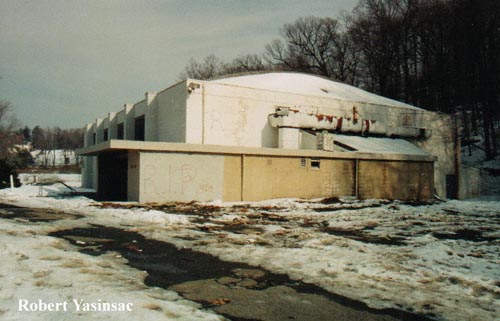
Squire Hall, the gymnasium, from the south.
"RIP 9D4" is written on the south wall, at left.
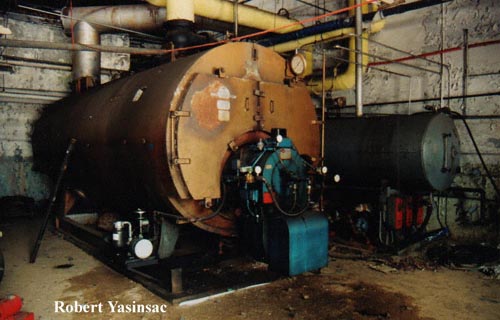
Inside the Steam Plant.
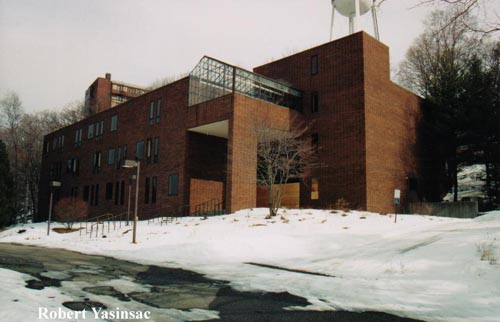
The Robert A. Cook Education / Science Building.
The men's dorms are visible at upper left, and part
of the water tower is visible at upper right.
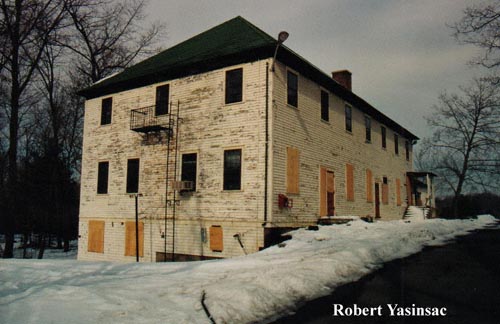
The Music Building, from the southeast. Demolished 2002.
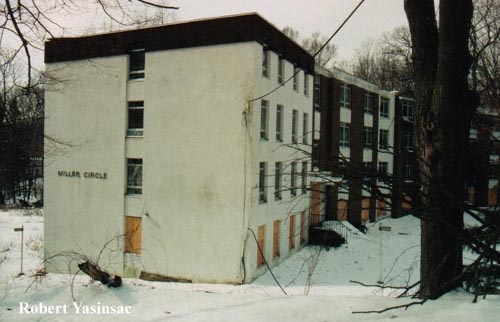
Miller Circle dormitories, from the east.
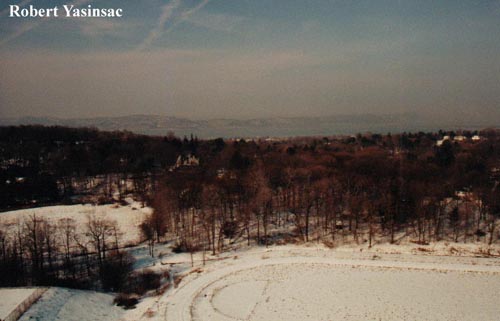
View west towards the Hudson River, from the seventh
floor of the men's dorms. Walter Law's stone mansion, known as "The
Castle" to TKC alumni, is visible at left-center.
